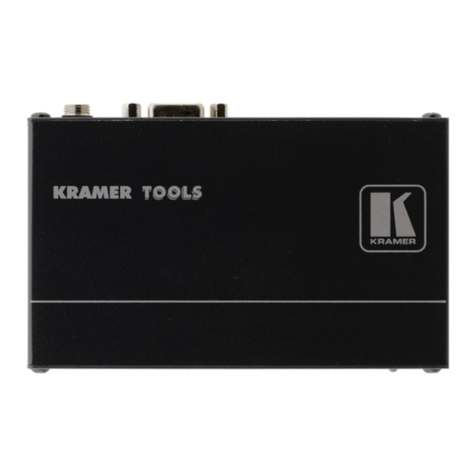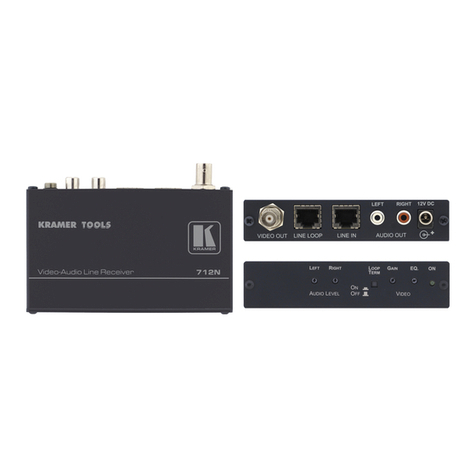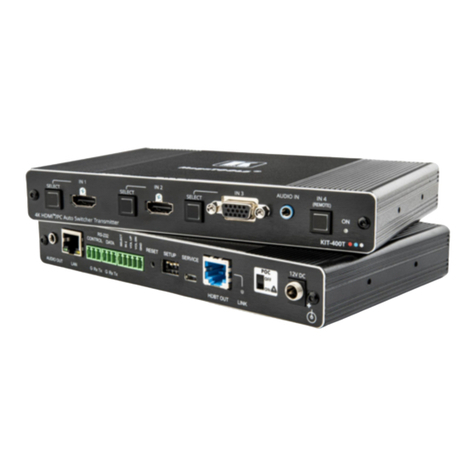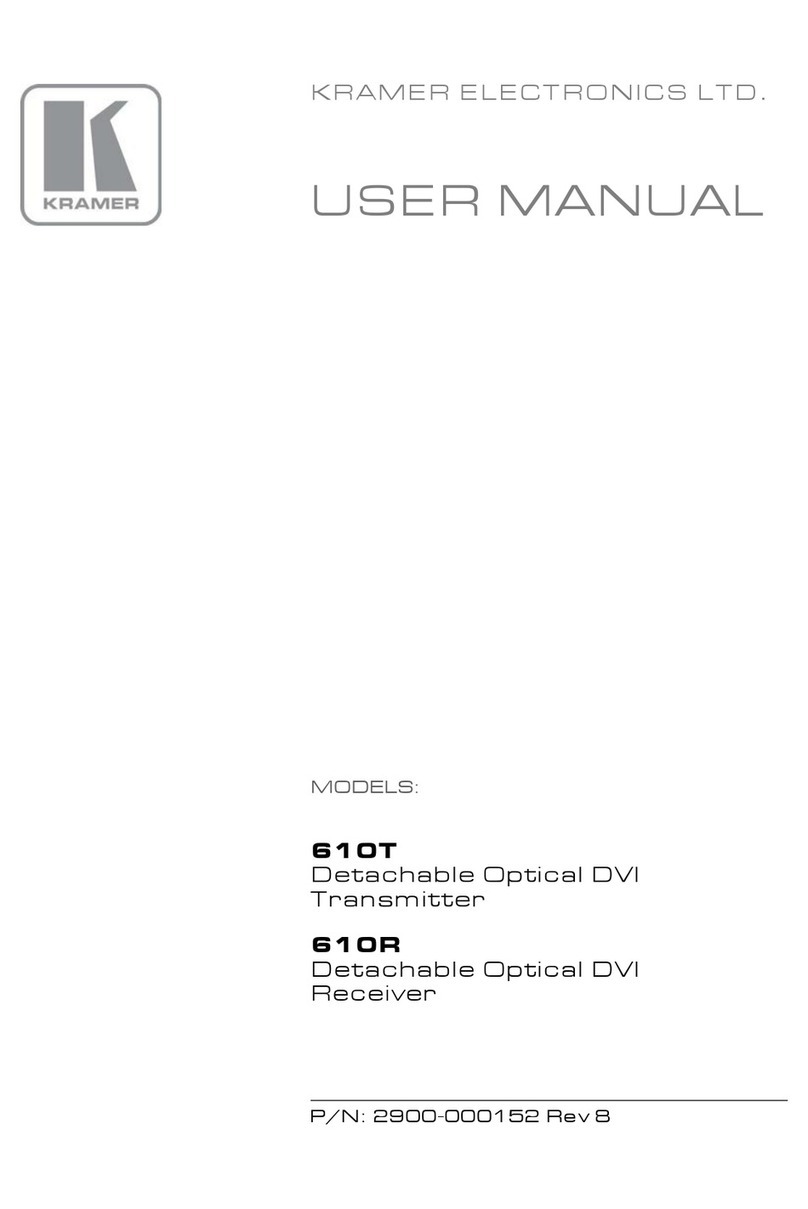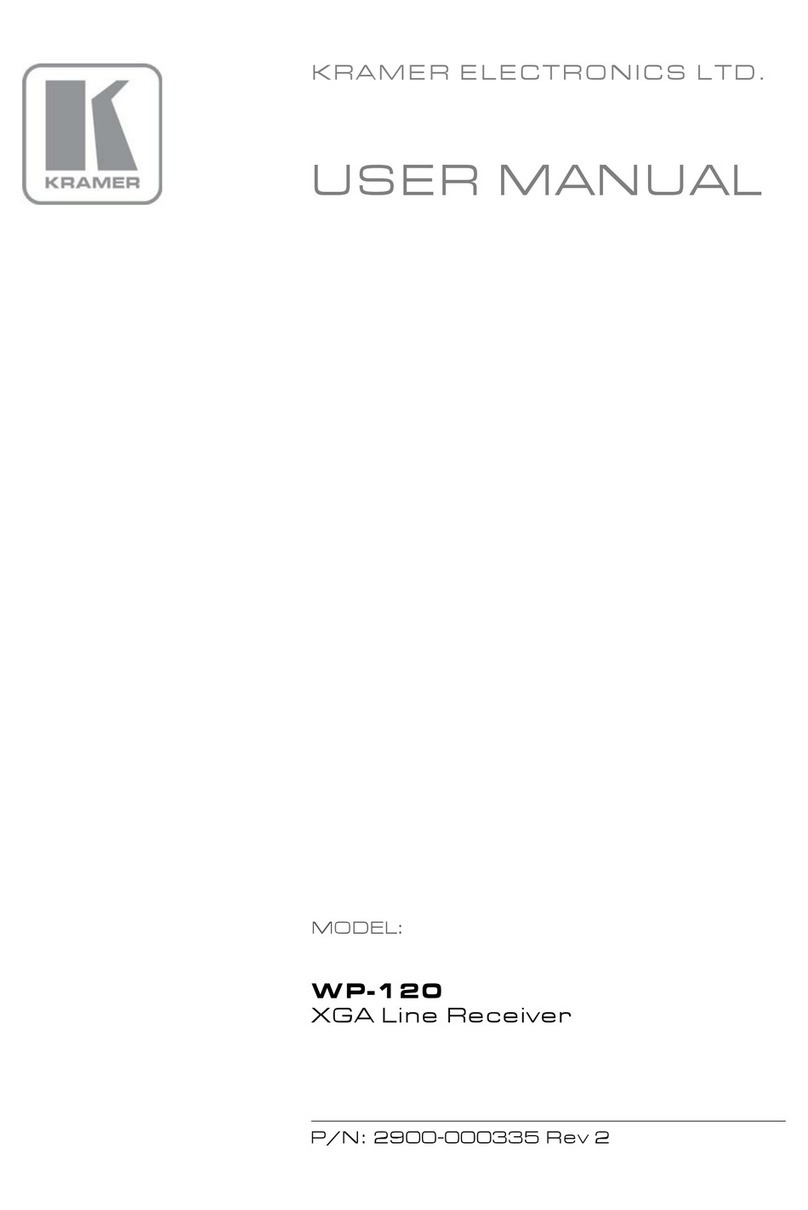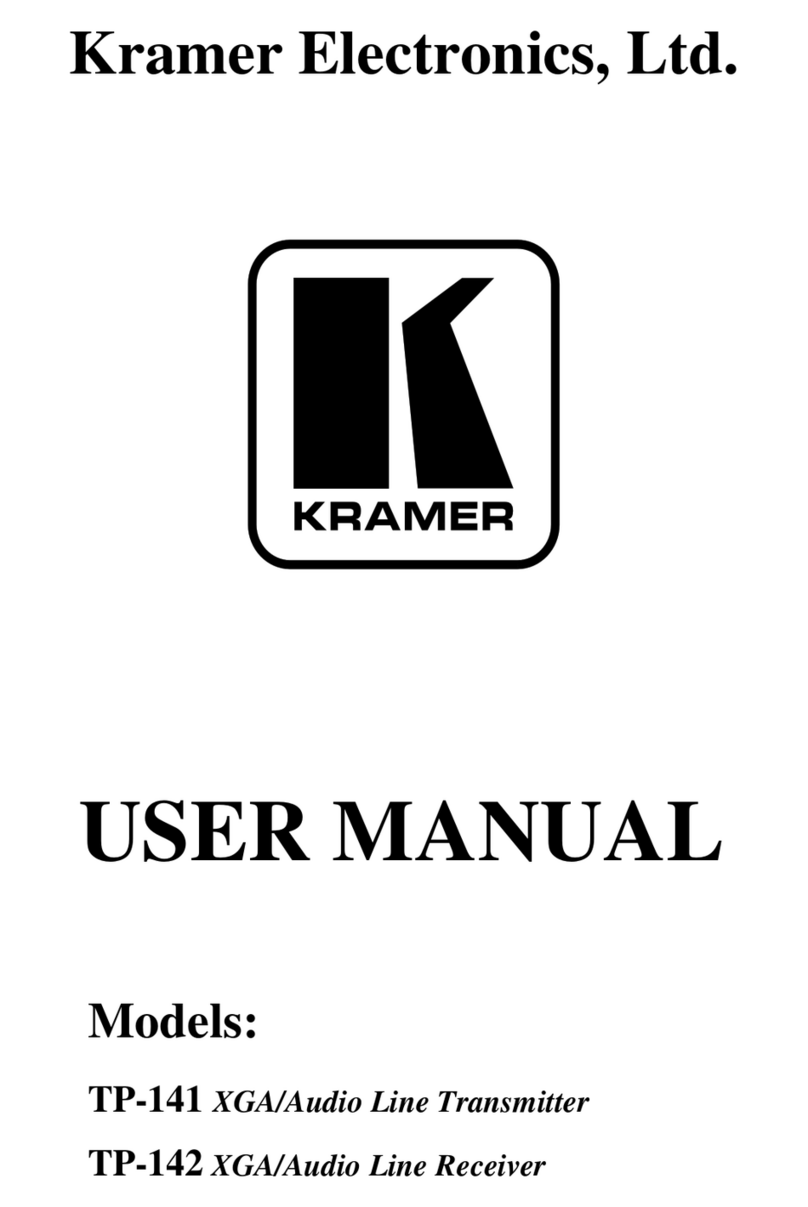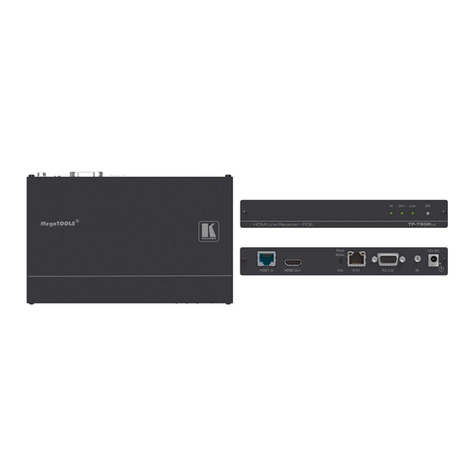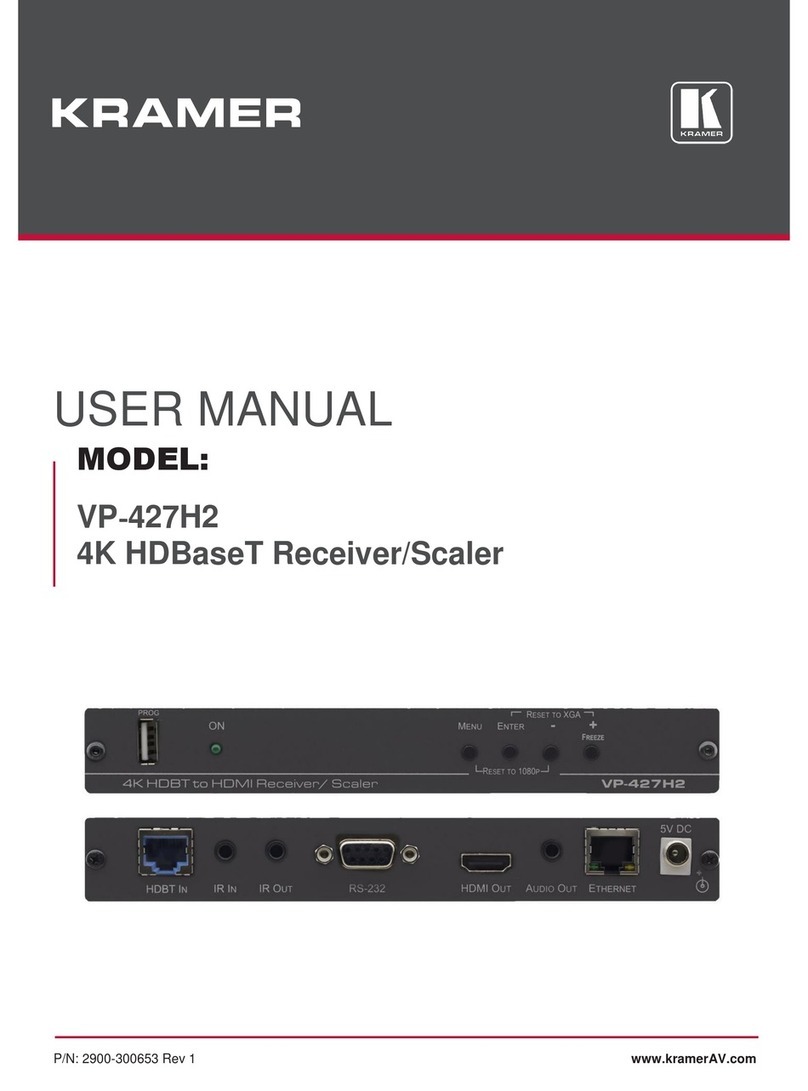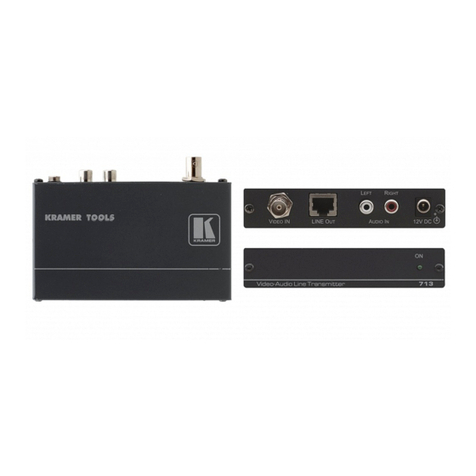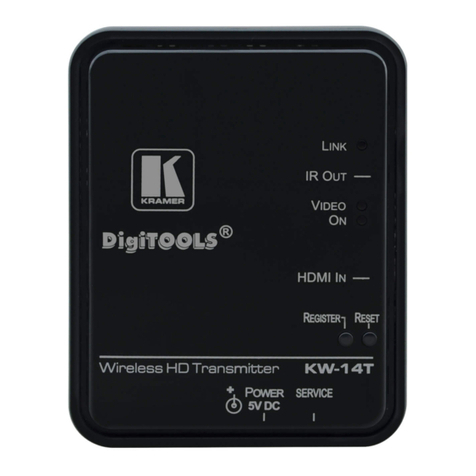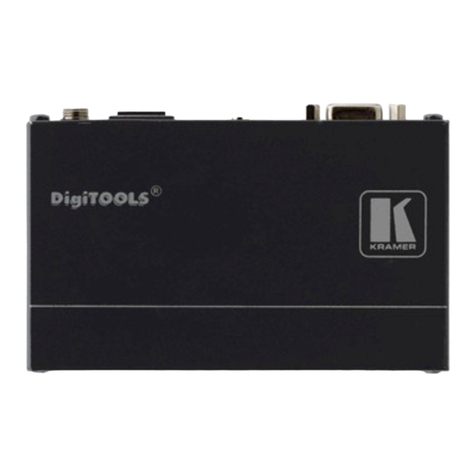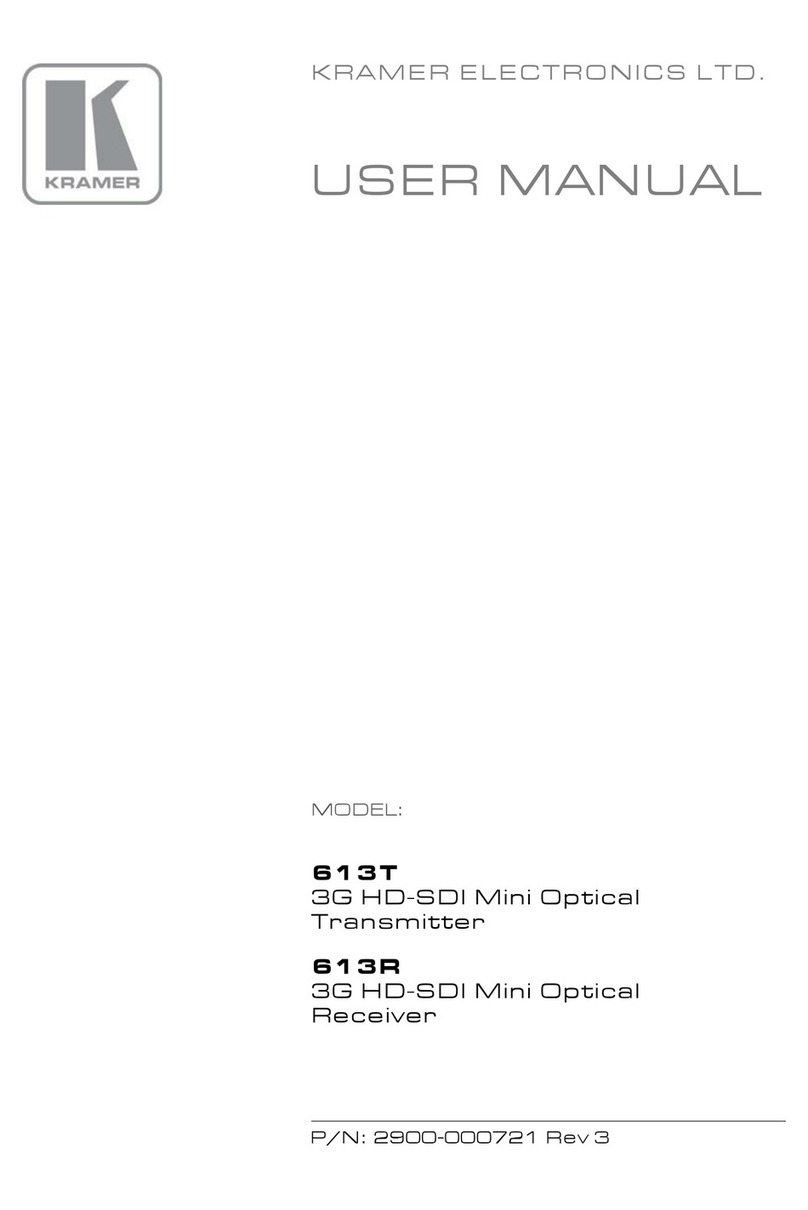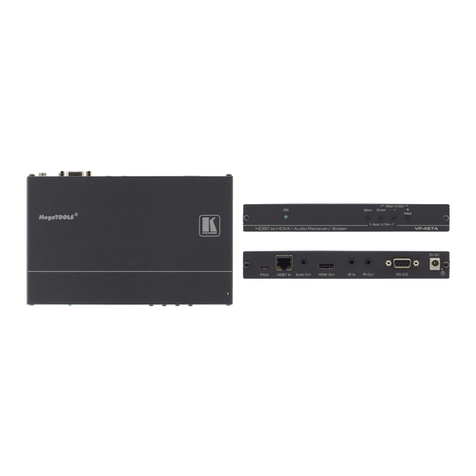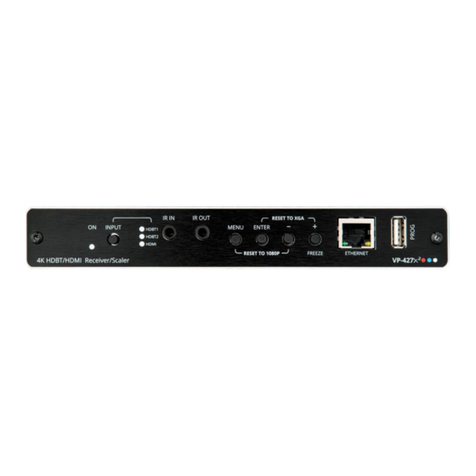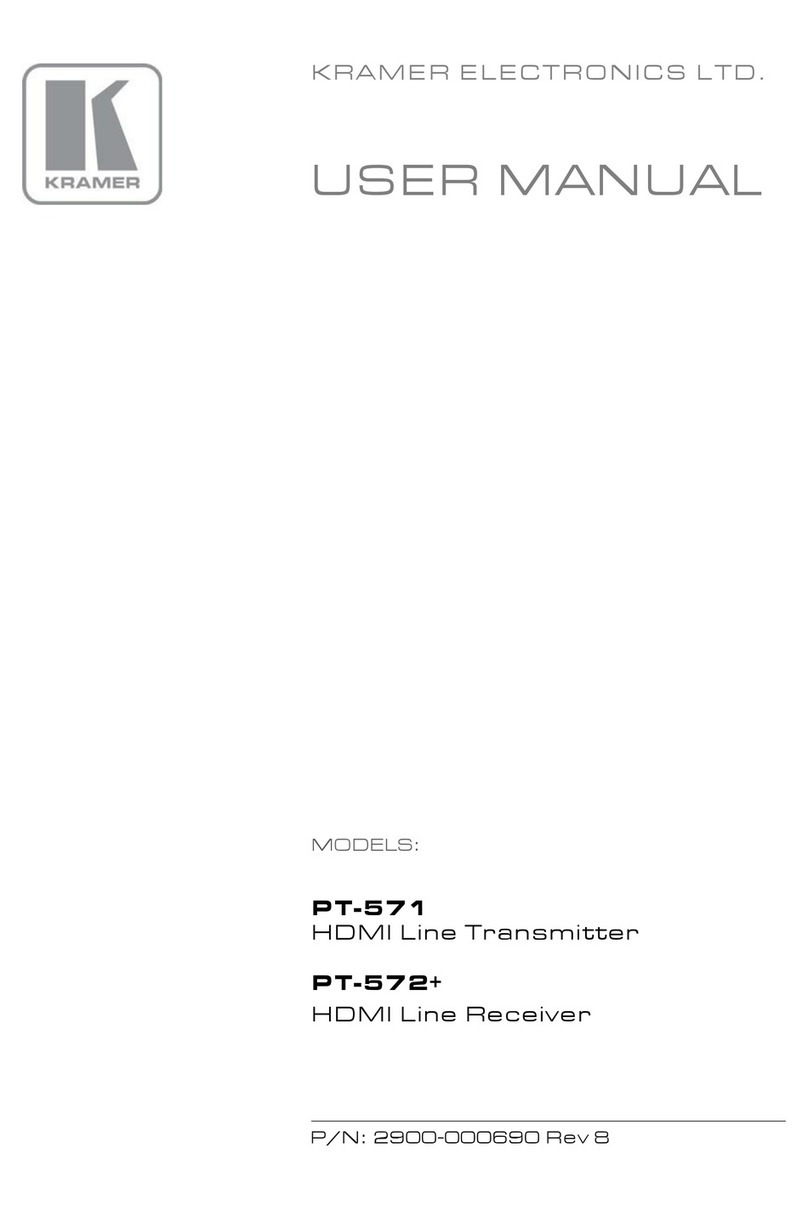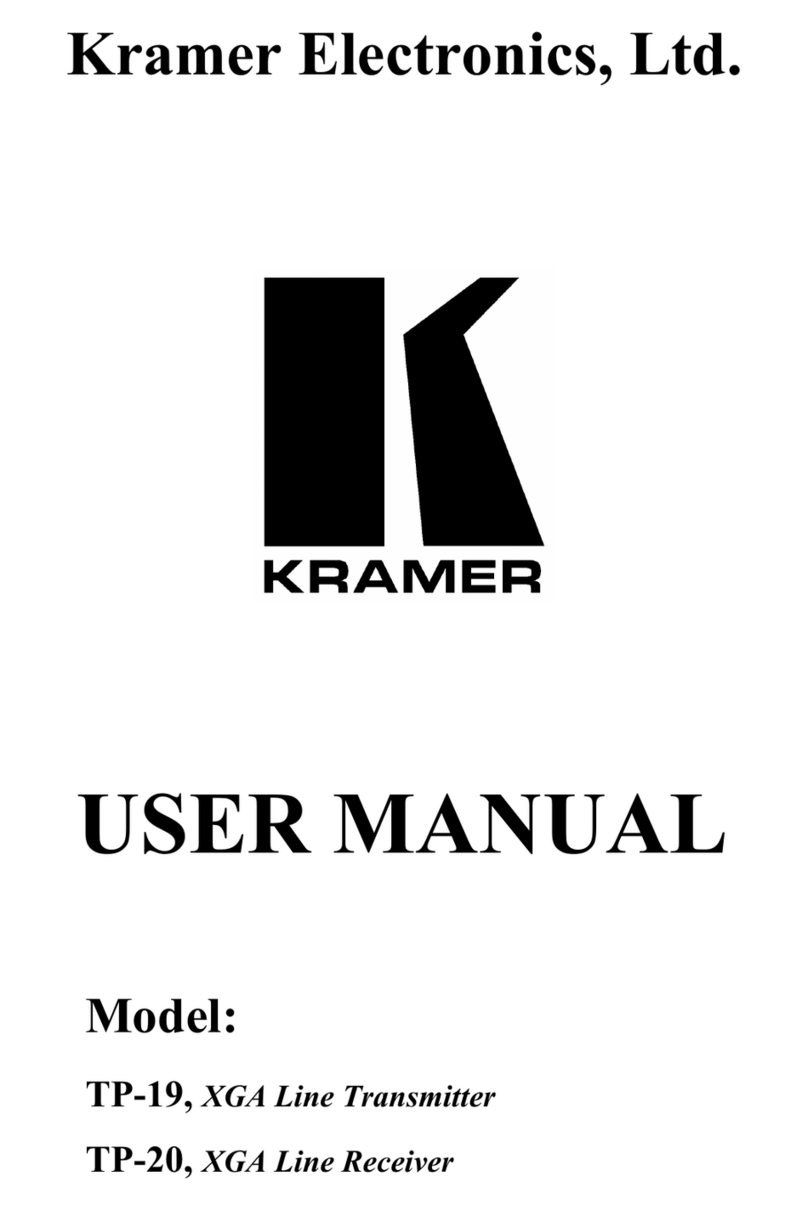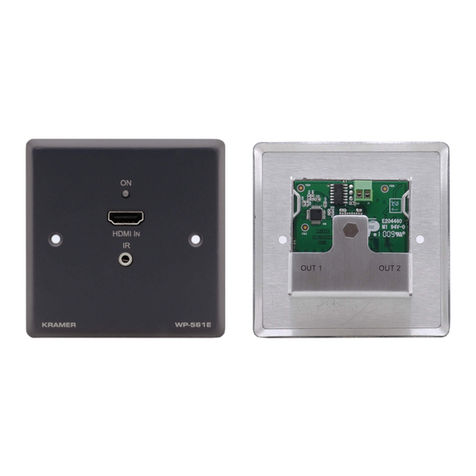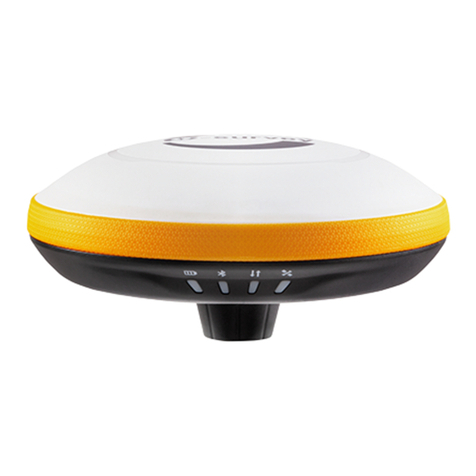Overview
TP-580RA is a high-performance, long-reach HDBaseT™ receiver for 4K@60Hz (4:2:0)
HDMI™, RS-232, IR and stereo audio signals over twisted pair that extracts (de-embeds) the
stereo audio signal on its digital and analog audio ports. It extends video signals to up to 40m
(130ft) over CAT copper cables at up to 4K@60Hz (4:2:0) 24bpp video resolution and
provides even further reach for lower HD video resolutions.
•High Performance Standard Extender –Professional HDBaseT extender for providing
long-reach signals over twisted-pair copper infrastructures. TP-580RA is a standard
extender that can be connected to any market-available HDBaseT-compliant extension
product. For optimum extension reach and performance, use recommended Kramer
cables.
•HDMI Signal Extension –HDMI 2.0 and HDCP 1.4 compliant. Supports deep color,
x.v.Color™, lip sync, HDMI uncompressed audio channels, Dolby TrueHD, DTS-HD, 2K,
4K, and 3D. EDID and CEC signals are passed through from the source to the display.
•I-EDIDPro™ Kramer Intelligent EDID Processing™ –Intelligent EDID handling,
processing and pass-through algorithm that ensure Plug and Play operation for HDMI
source and display systems.
•Multi-channel Audio Extension –Up to 32 channels of digital stereo uncompressed
signals for supporting studio-grade surround sound.
•Audio Extraction (De-embedding) –According to auto-sensed signal attributes and per
user selection, the transmitted digital audio signal or Audio Return Channel (ARC)
signal, is extracted from the AV signal. In parallel to being transmitted to the HDMI AV
output, this signal is transmitted to the stereo, digital audio output, and converted to an
analog signal for transmission to the balanced stereo analog audio output. This enables
high-quality audio playback by routing the audio to external speakers in parallel to
routing to local speakers on the connected AV acceptor device (such as a TV or laptop).
•Bidirectional RS-232 Extension –Serial interface data flows in both directions, allowing
data transmission and device control.
•Bidirectional Infrared Extension –IR interface data flows in both directions, allowing
remote control of peripheral devices located at either end of the extended line.
•Easy Maintenance –Status LED indicators for HDMI and HDBT ports facilitate easy
local maintenance and troubleshooting. Local firmware upgrade via RS-232 connection
ensures lasting, field-proven deployment.
•Easy Installation –Compact DigiTOOLS™ fan-less enclosure for dropped-ceiling
mounting, or side-by-side mounting of 3 units in a 1U rack space. For a recommended
rack adapter, see www.kramerav.com/product/TP-580RA.
